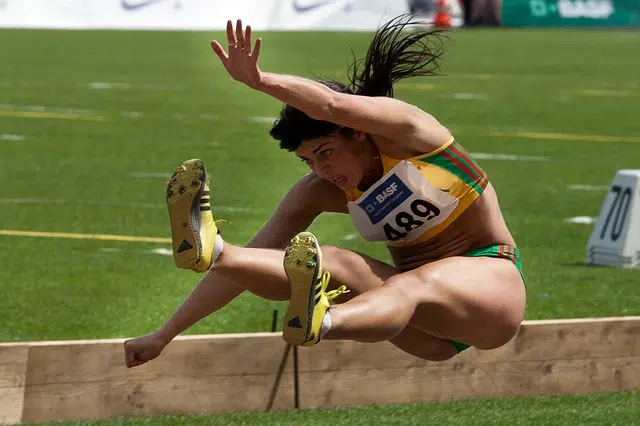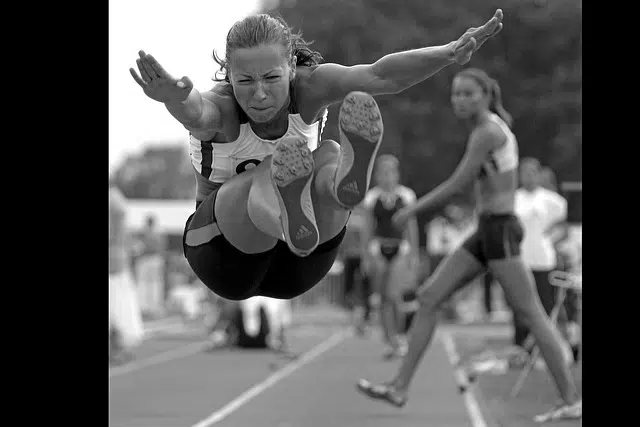
The long jump is an athletics test.
Jump is the consequence of jumping : a movement that a person carries out to get off the surface of the ground and thus cover a certain distance or access what would otherwise be inaccessible. Long , on the other hand, is something that has a considerable length.
The long jump , also known as long jump , is the name of a discipline that is part of athletics . The competition consists of performing a jump after a short run to cover the greatest possible distance horizontally.
How the long jump test is developed
The athlete, in this way, has a specific area to perform the race that allows him to gain momentum and perform his jump. There is a line that marks the limit of the race : if the person steps on that line, their long jump will be invalidated.
When the athlete makes his jump, he falls into a kind of pool of wet sand . The furthest mark left on the sand will be considered the distance covered with your jump (which begins to be measured from the aforementioned limit to end the race and start the jump).
The best brands
In the long jump events, each competitor performs three jumps per round . The best jump of each competitor is considered to determine who qualifies for the next round and then who wins the test.
As of August 2021, the men's long jump world record is held by American Mike Powell , who in 1991 managed to jump a distance of 8.95 meters . The best female mark, meanwhile, belongs to the Russian Galina Chistyakova : she jumped 7.52 meters in 1988 .

Three phases can be recognized in the development of the long jump.
Phases of the long jump
The requirements to perform a correct and successful long jump are several: speed, leg strength, flexibility, technique and coordination. It is a discipline that is mastered after years of training and dedication. The three phases into which it is divided are described below.
career
In this phase, the length of the race ranges from 16 to 20 meters, or 50 for professional level athletes.
impulse
The goal in this phase is to achieve the highest vertical momentum without losing speed. To achieve this, it is necessary that the penultimate step be longer than the previous ones and the last one slightly less extensive. In this way it becomes easier to push upward from the center of gravity without significantly decreasing speed.
suspension
It is also known as the flight phase , and is divided into three possible techniques that aim to adopt a stable and balanced final position.
Flight phase techniques
* natural technique : it is especially useful for short jumps and for people with little experience. Its execution is not complex, since it is enough to attach the free leg to the swing in the middle of the suspension to carry out the translation in said position (which is similar to the one we have when we are sitting). With this technique it is not very possible to make good jumps;
* extension technique : the back must be flexed forward while the legs are stretched, staying in position so that the legs do not descend during the fall. Compared to the natural technique, this is preferable and can offer an extra half meter if done correctly,
* scissors technique : it is also called passing , and consists of continually closing the legs, as if you were walking quickly in the air. Depending on the number of "steps" you take while suspended, the jump receives a different name, such as "2 and a half", "3 and a half", etc. To do the half , the person must bring the free leg forward, having picked it up and flexed it beforehand, and then extend it halfway to the same height as the other. The arms play a primary role in maintaining balance during this movement, rotating horizontally at shoulder level.
